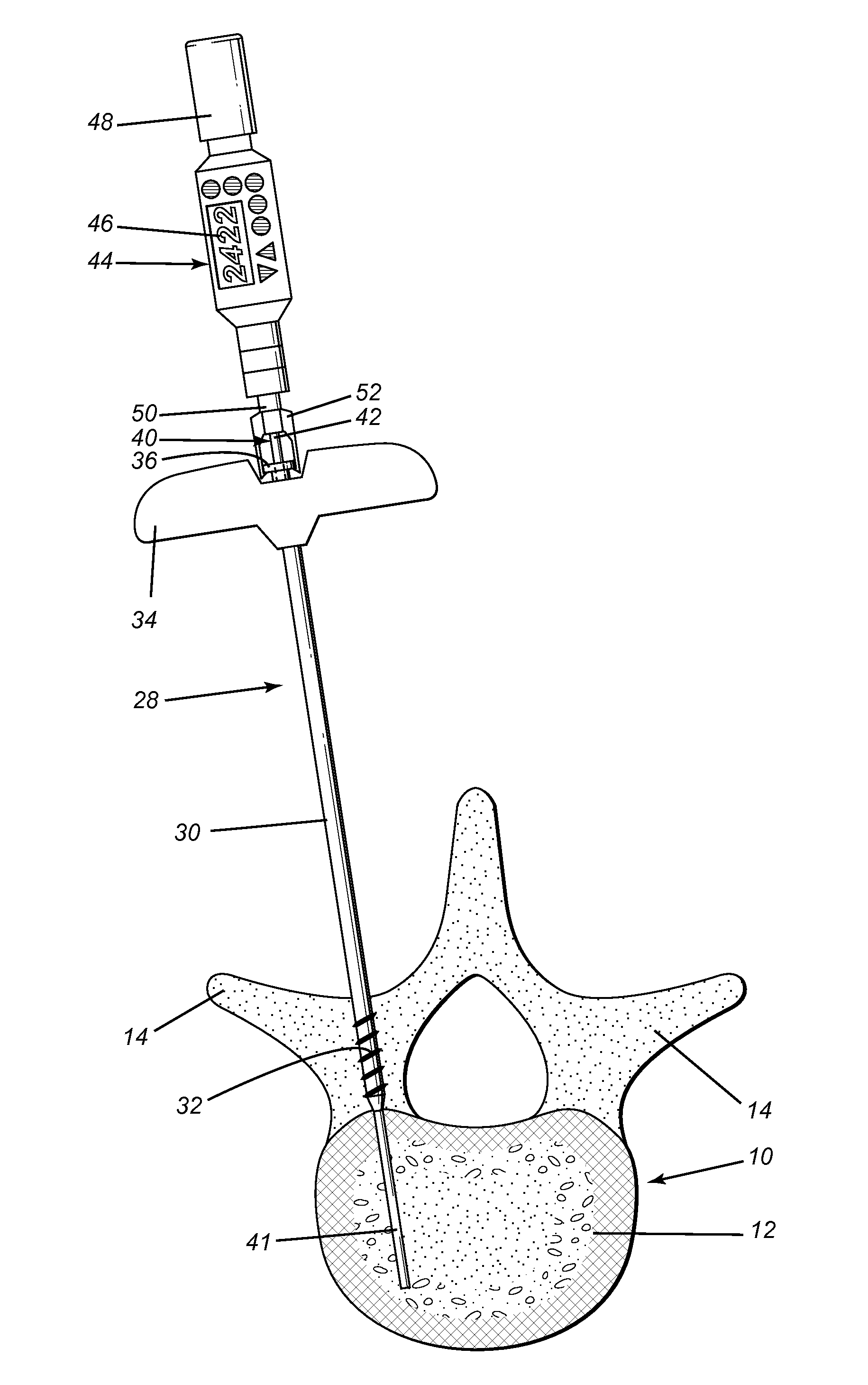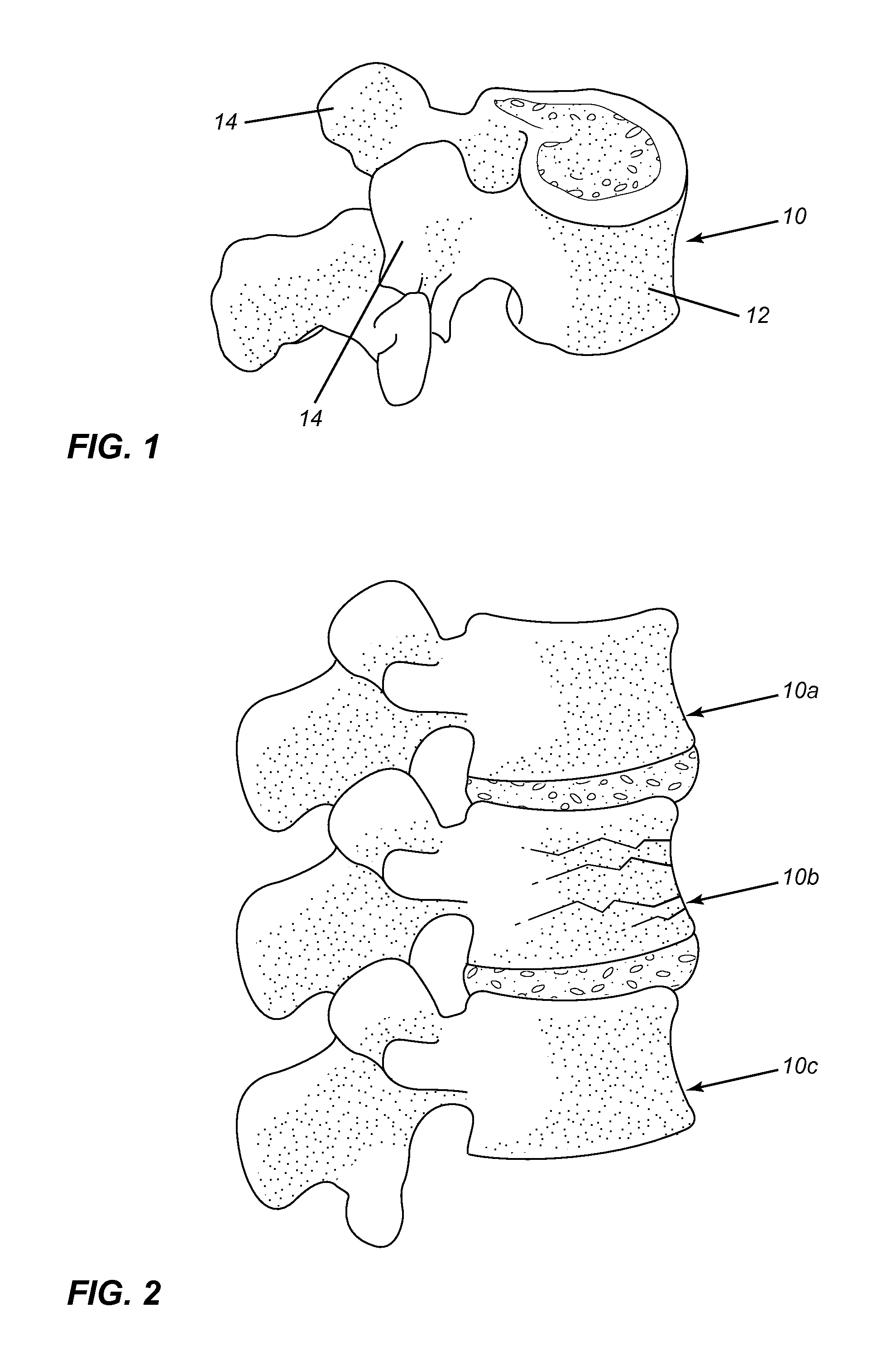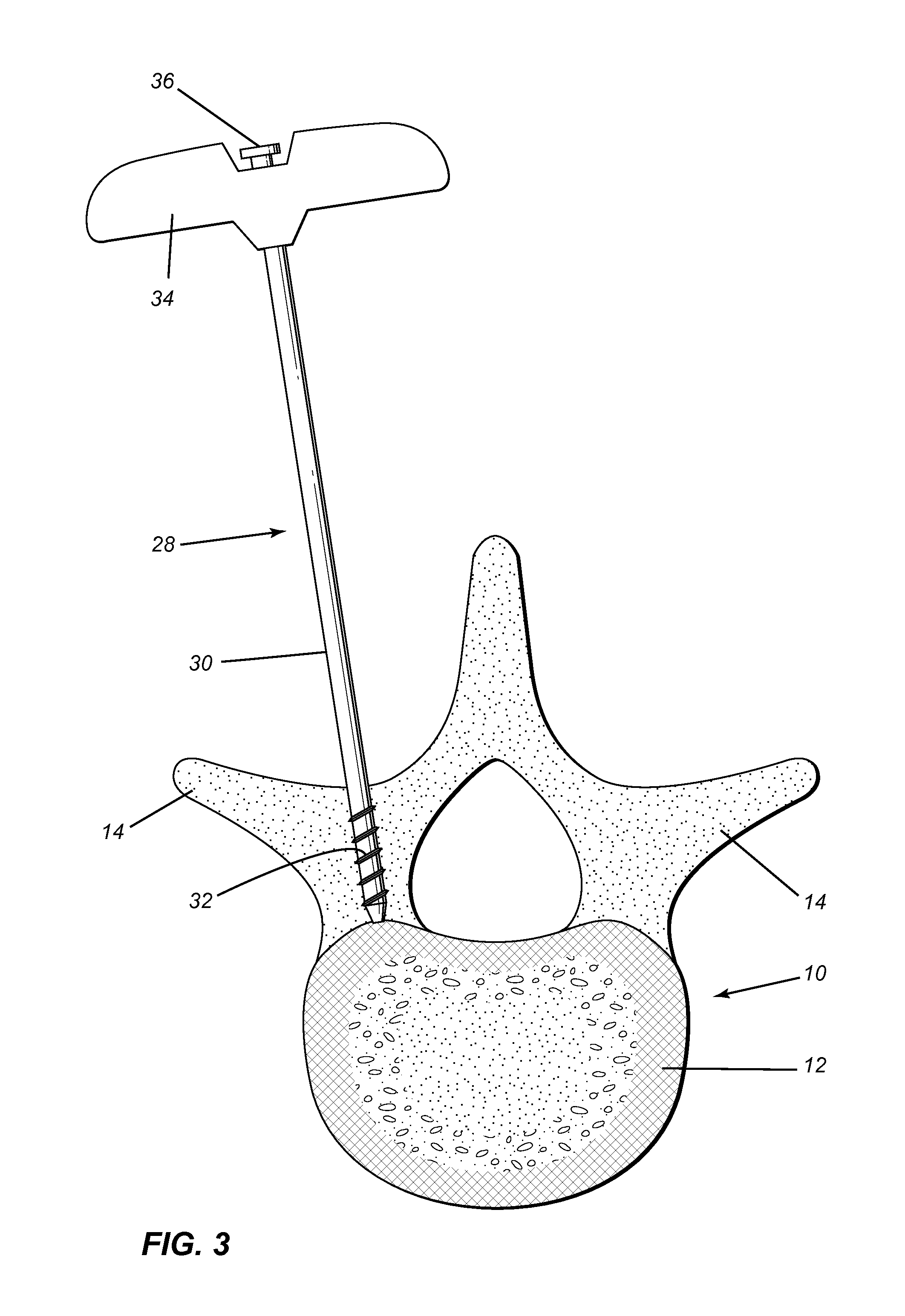Minimally invasive method and applications for injectible materials
a technology of minimally invasive methods and materials, applied in the direction of sensors, catheters, diagnostics, etc., can solve the problems of uneven exit of cement, inability to measure bone quality, and inability to have an objective method of measuring bone quality, etc., to achieve uniform cement distribution in bone sites
- Summary
- Abstract
- Description
- Claims
- Application Information
AI Technical Summary
Benefits of technology
Problems solved by technology
Method used
Image
Examples
example i
[0062 is as shown in FIG. 13:
[0063]Viscosity of the cement:[0064]1,000 to 5,000 Pa.S
[0065]Internal diameter 63 of the stem 56 in the fenestration zone 62:[0066]2.25 mm[0067]diameter of a port 62a: 0.3 mm[0068]diameter of a port 62b: 0.35 mm[0069]diameter of a port 62c: 0.4 mm[0070]diameter of a port 62d: 0.45 mm[0071]diameter of a port 62e: 0.5 mm[0072]wall thickness of the stem 56:
[0073]Thus the internal area of the stem 56 in the fenestration zone 62 is 3.97 mm2 while the area of a port 62a is 0.07 mm2
[0074]In another example port 62a had a diameter of 0.25 mm. The other rows of ports 62b-62e increased proportionally.
[0075]Thus the internal area of the stem 56 in the fenestration zone 62 is 3.97 mm2 while the area of a port 62a is 0.05 mm2.
[0076]The viscosity of the fluid such as medical cement or even a gel will impact on the parameters of the internal diameter 63 of the stem 56 in the fenestration zone 62. For instance in the case of a gel the viscosity typically will be in the...
PUM
 Login to View More
Login to View More Abstract
Description
Claims
Application Information
 Login to View More
Login to View More - R&D
- Intellectual Property
- Life Sciences
- Materials
- Tech Scout
- Unparalleled Data Quality
- Higher Quality Content
- 60% Fewer Hallucinations
Browse by: Latest US Patents, China's latest patents, Technical Efficacy Thesaurus, Application Domain, Technology Topic, Popular Technical Reports.
© 2025 PatSnap. All rights reserved.Legal|Privacy policy|Modern Slavery Act Transparency Statement|Sitemap|About US| Contact US: help@patsnap.com



